Fantasia 2000 is a 1999 American animated film by Walt Disney Feature Animation and Walt Disney Pictures, and released by Buena Vista Pictures. Produced by Roy E. Disney and Donald W. Ernst, it is the 38th Disney animated feature film and the sequel to Fantasia (1940). Like its predecessor, Fantasia 2000 consists of animated segments set to pieces of classical music. Celebrities including Steve Martin, Itzhak Perlman, Quincy Jones, Bette Midler, James Earl Jones, Penn & Teller, and Angela Lansbury introduce each segment in live action scenes directed by Don Hahn.
| Fantasia 2000 | |
|---|---|
IMAX theatrical release poster | |
| Directed by |
|
| Produced by |
|
| Written by | See Credits |
| Starring |
|
| Music by | See Program |
| Cinematography | Tim Suhrstedt |
| Edited by |
|
Production company | Walt Disney Pictures Walt Disney Feature Animation |
| Distributed by | Buena Vista Pictures |
Release date |
|
Running time | 75 minutes |
| Country | United States |
| Language | English |
| Budget | $80–$85 million |
| Box office | $90.9 million |
After numerous unsuccessful attempts to develop a Fantasia sequel, The Walt Disney Company revived the idea shortly after Michael Eisner became chief executive officer in 1984. The commercial success of the 1991 home video release of Fantasia convinced Eisner that there was enough public interest and funds for a sequel and he assigned Disney as executive producer. The music for six of the film's eight segments is performed by the Chicago Symphony Orchestra conducted by James Levine. The film includes The Sorcerer's Apprentice from the 1940 original. Each new segment was produced by combining traditional animation with computer-generated imagery.
Fantasia 2000 premiered on December 17, 1999, at Carnegie Hall in New York City as part of a concert tour that also visited London, Paris, Tokyo, and Pasadena, California. The film was released in 75 IMAX theaters worldwide from January 1 to April 30, 2000, marking the first animated feature-length film to be released in the format. Its general release in traditional theaters followed on June 16, 2000. Some critics praised the film while others singled out its uneven quality. Budgeted at about $80–$85 million, the film has earned $90.8 million in gross revenue worldwide.
Screenplay
The film begins with the sound of an orchestra tuning and Deems Taylor's introduction from Fantasia. Panels showing various segments from Fantasia fly in outer space and form the set and stage for an orchestra. Musicians take their seats and tune up and animators draw at their desks before James Levine approaches the conductor's podium and signals the beginning of the first piece.
- Symphony No. 5 (first movement) by Ludwig van Beethoven. Abstract patterns and shapes that resemble butterflies in various colorful shades, tints and hues explore a world of light and darkness whilst being pursued by a swarm of black bats. The world is ultimately conquered by light. Introduced by surviving archival recordings by Deems Taylor.
- Pines of Rome by Ottorino Respighi. A family of humpback whales are able to fly. The calf is separated from his parents and he becomes trapped in an iceberg. Eventually he finds his way out with his mother's help. The family join a larger pod of whales who fly and frolic through the clouds to emerge into outer space. Introduced by Steve Martin and Itzhak Perlman.
- Rhapsody in Blue by George Gershwin. Set in New York City in the 1930s, and designed in the style of Al Hirschfeld's known caricatures of the time, the story follows four individuals, Duke, Joe, Rachel, and John, who wish for a better life. The segment ends with all four getting their wish, though their stories interact with each other's without any of them knowing. Introduced by Quincy Jones with pianist Ralph Grierson.
- Piano Concerto No. 2, Allegro, Opus 102 by Dmitri Shostakovich. Based on the fairy tale "The Steadfast Tin Soldier" by Hans Christian Andersen, a broken toy soldier with one leg falls in love with a toy ballerina and protects her from an evil jack-in-the-box. Unlike the original story, this version has a happy ending. Introduced by Bette Midler featuring pianist Yefim Bronfman.
- The Carnival of the Animals (Le Carnival des Animaux), Finale by Camille Saint-Saëns. A flock of flamingoes tries to force a slapstick member, who enjoys playing with a yo-yo, to engage in the flock's "dull" routines. Introduced by James Earl Jones with animator Eric Goldberg.
- The Sorcerer's Apprentice by Paul Dukas. Based on the poem "Der Zauberlehrling" by Goethe, the segment is the only one featured in both Fantasia and Fantasia 2000. It tells the story of Mickey Mouse, an apprentice of sorcerer Yen Sid who attempts some of his master's magic tricks before knowing how to control them. Introduced by Penn & Teller.
- Pomp and Circumstance – Marches 1, 2, 3 and 4 by Edward Elgar. Based on the story of Noah's Ark from the Book of Genesis, Donald Duck is Noah's assistant and Daisy Duck is Donald's wife. Donald is given the task of gathering the animals to the Ark and misses, loses, and reunites with Daisy in the process. Introduced by James Levine featuring Mickey Mouse and Donald Duck.
- Firebird Suite—1919 Version by Igor Stravinsky. A Sprite is awoken by her companion, an elk, and accidentally wakes the Firebird, a fiery spirit of destruction in a nearby volcano who destroys the forest and seemingly the Sprite. The Sprite survives and the elk encourages her to restore the forest to its normal state. Introduced by Angela Lansbury.
Development
—Walt Disney
In 1940, Walt Disney released Fantasia, his third animated feature film, consisting of eight animated segments set to pieces of classical music. Initially he planned to have the film on continual release with new segments replacing older ones so audiences would never see the same film twice. The idea was dropped following the film's initial low box office receipts and a mixed response from critics. Following preliminary work on new segments, the idea was shelved by 1942 and was not revisited for the remainder of Disney's life. In 1980, animators Wolfgang Reitherman and Mel Shaw started preliminary work on Musicana, a feature film "mixing jazz, classical music, myths, modern art ... following the old Fantasia format" that was to present "ethnic tales from around the world with the music of the various countries". The project was cancelled in favor of Mickey's Christmas Carol (1983).
The idea of a Fantasia sequel was revived shortly after Michael Eisner became chief executive officer of The Walt Disney Company in 1984 when Walt's nephew, vice chairman Roy E. Disney, suggested it to him at a lunch, something that first entered his mind ten years earlier. Disney recalled his reaction: "It was as if a big light bulb went on over his head. The idea was enticing, but we didn't have the resources to carry it out". Walt Disney Studios chairman Jeffrey Katzenberg showed a lack of interest in the film. He had once asked André Previn to work on a Fantasia film but Previn declined after he learned it was to feature songs by the Beatles rather than classical music. Eisner approached Leonard Bernstein with the same idea, but while he seemed enthusiastic, Bernstein died before production began. It took a further seven years before the film was considered, after the 1990 reissue of Fantasia grossed $25 million domestically and its 1991 home video release prompted 9.25 million pre-orders. Disney saw its commercial success as a sign that there was enough public interest in the Fantasia franchise to make a sequel. Eisner finally gave the green-light to the film in 1991 and agreed to have Disney serve as executive producer on the basis that its production was funded by the proceeds from the video sales. Disney assigned Donald W. Ernst as producer and Hendel Butoy as supervisory director having liked his work with The Rescuers Down Under (1990).
During the search for a suitable conductor, Disney and Walt Disney Feature Animation president Thomas Schumacher invited Metropolitan Opera conductor James Levine and manager Peter Gelb to a meeting in September 1991. Disney recalled: "I asked James what his thought was on a three minute version of Beethoven's fifth symphony. He paused and went 'I think the right three minutes would be beautiful'". In November 1992, Disney, Schumacher, Levine, Gelb, and Butoy met in Vienna to discuss a collection of story reels developed, one of them being Pines of Rome, which Levine took an immediate liking to. Butoy described Levine's enthusiasm toward the film as "like a kid in a candy store". Because Katzenberg continued to express some hostility towards the film, Disney held development meetings without him and reported directly to Eisner instead, something that author James B. Stewart wrote "would have been unthinkable on any other future animation project."
Production began under the working title of Fantasia Continued with a release in 1997. The title changed to Fantasia 1999 followed by Fantasia 2000 to coincide with its theatrical release in 2000. Disney formed its initial running order with half of the Fantasia program and only "three or four new numbers" with the aim of releasing a "semi-new movie". Realizing the idea would not work, he kept three Fantasia segments—The Sorcerer's Apprentice, The Nutcracker Suite, and Dance of the Hours—in the program for "quite a while". In the end, Dance of the Hours was dropped and The Nutcracker Suite was replaced by Rhapsody in Blue during the last few months of production following the response from numerous test screenings. Disney kept The Sorcerer's Apprentice in the final program as a homage to Fantasia. The segment underwent digital restoration by Cinesite in Los Angeles. Disney considered using Clair de Lune, a piece originally made for Fantasia that followed two Great white herons flying through the Everglades at night, but thought it was "pretty boring". An idea to have "a nightmare and a dream struggling for a sleeping child's soul" to Rhapsod
Watch movie Fantasia 2000 online on Amazon
Watch movie Fantasia 2000 online
Watch The Movie On PrimeAayee Milan Ki Raat Full HD Movie Download
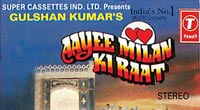
Shiv Mahima Full HD Movie Download
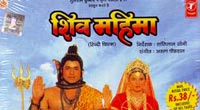
Marte Dam Tak Full HD Movie Download

Durga Pooja Full HD Movie Download

Vikram Vetal Ki Kahani Full HD Movie Download
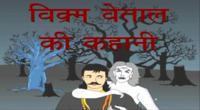
Ardhangini Full HD Movie Download

Pratighat Full HD Movie Download
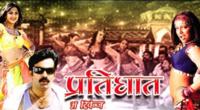
Dus (2005) Full HD Movie Download
.jpg)
Joru Ka Gulam (1972) Full HD Movie Download
.jpg)
Harjaee Full HD Movie Download
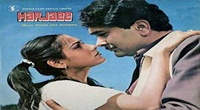
Cheluveye Ninne Nadalu Full HD Movie Download

Vat Pahte Sunechi Full HD Movie Download
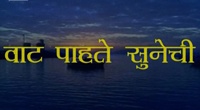
Valentines Night (2012) Full HD Movie Download
.jpg)
Superman Returns Full HD Movie Download
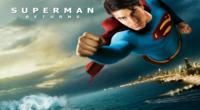
Steamboat Bill Jr. Full HD Movie Download
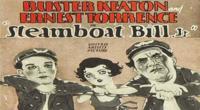
Samooham Full HD Movie Download

Aithe Full HD Movie Download
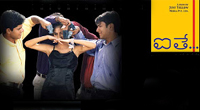
Dear Brother Full HD Movie Download
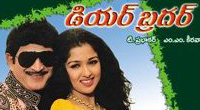
Shena Full HD Movie Download
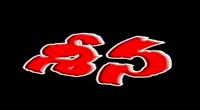
Kaadal Mannan Full HD Movie Download
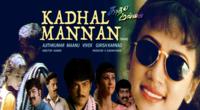
Sawaal (1982) Full HD Movie Download
.jpg)
Download latest Movie from bollywood
- 1> baaghi 3
- 2> THE SKY IS PINK MOVIE FULL STORY AND REVIEW
- 3> Luka Chuppi
- 4> TO ALL THE BOYS I’VE LOVED BEFORE
- 5> Kabir Singh
- 6> Street Dancer 3D
- 7> Simmba
- 8> Gone Girl
- 9> The Girl Who Lived
- 10> Ludo
- 11> DILWALE DULHANIA LE JAYENGE
- 12> GUILTY
- 13> The Godfather
- 14> Adventures of Rusty
- 15> Sooryavanshi
- 16> Satyameva Jayate 2
- 17> Thappad
- 18> Bhool Bhulaiyaa 2
- 19> KGFChapter 2
- 20> Mardaani 2
- 21> Pinjar
- 22> Shivaji maharaj
- 23> Ek Villian 2
- 24> Hungama 2
- 25> Divergent
- 26> Mumbai Saga
- 27> The Internship
- 28> HIT (telugu)
- 29> Panga
- 30> The perfect date
- 31> 16 December
- 32> Gopala Gopala (Telugu)
- 33> Brahmastra
- 34> Gangubai Kathiawadi
- 35> Manmadhudu
- 36> Nenu local
- 37> Mahanati
- 38> Shatamanam bavathi
- 39> Lagaan
- 40> After
- 41> MOM
- 42> Shamshera
- 43> Raguvaran BTech
- 44> Khakee
- 45> The villain
- 46> OM
- 47> Mr. perfect
- 48> Bueatifull mind
- 49> Hichki
- 50> Gabbar Singh
- 51> Jogi
- 52> Before Sunrise
- 53> Before Sunset
- 54> Before Midnight
- 55> The Big Bull
- 56> Top Gun: Maverick
- 57> The Purge
- 58> The Sky is Pink
- 59> Laxmmi Bomb
- 60> Sadak 2
- 61> Sufna
- 62> Prithviraj
- 63> PK
- 64> Coolie No 1(2020)
- 65> Black Widow
- 66> Dear Zindagi
- 67> Dil Bechara
- 68> PHIR HERA PHERI
- 69> WAR
- 70> Dostana
- 71> RRR: Roudram Ranam Rudhiram
- 72> Maidan
- 73> Dabbang 3
- 74> Chhalaang
- 75> life as we know it
- 76> SherShaah
- 77> Sandeep Aur Pinky Faraar
- 78> Event Horizon
- 79> 83
- 80> Radhe: Your Most Wanted Bhai
- 81> Gunjan Saxena: The Kargil Girl
- 82> Mr India
- 83> Vivah
- 84> Anokha Bandhan
- 85> Ghost
- 86> Bhoot: Part One - The Haunted Ship
- 87> Haseen Dilruba
- 88> Laal Singh Chaddha
- 89> Qismat
- 90> Rajput
- 91> Drive
- 92> Dil Chahta Hai
- 93> Dil Ki Baazi
- 94> Dil Ka Rishta
- 95> Teesri Manzil
- 96> Dil
- 97> Love Aaj Kal
- 98> Khaali Peeli
- 99> Bunty Aur Babli 2
- 100> Atrangi Re
- 101> Gulabo Sitabo
- 102> Jodi
- 103> Suraj Pe Mangal Bhari
- 104> Deewana
- 105> Attack
- 106> Sardar Udham Singh
- 107> Toofan
- 108> THE LOVEBIRDS
- 109> Jersey
- 110> Ginny Weds Sunny
- 111> Thalaivi
- 112> Shiddat
- 113> Angels vs Zombies
- 114> Koi Mil Gya
- 115> Thank God
- 116> Bhuj: The Pride of India
- 117> Hum Aapke Hain Kaun
- 118> The Platform
- 119> Bird Box
- 120> Roohi Afzana
- 121> Torbaaz
- 122> Nikamma
- 123> World War Z
- 124> Extraction
- 125> Train to Busan
- 126> Life of Pi
- 127> SHAADI MEIN JROOR AANA
- 128> Himmat Aur Mehnat
- 129> To All The Boys: P.S. I Still Love You
- 130> Mimi
- 131> Good Newwz
- 132> Shubh Mangal Zyada Saavdhan
- 133> Raabta
- 134> Harry Potter and the Philosopher's Stone
- 135> Harry Potter and the Chamber of Secrets
- 136> Chhapaak
- 137> War of the Worlds
- 138> Harry Potter and the Prisoner of Azkaban
- 139> Harry Potter and the Goblet of Fire
- 140> MURDER MYSTERY
- 141> Shakuntala Devi
- 142> Bachchan Pandey
- 143> Jayeshbhai Jordar
- 144> Sheer Qorma
- 145> Saina
- 146> 'O' Pushpa I hate tears
- 147> Kedarnath
- 148> MS Dhoni The Untold Story
- 149> Chhichhore
- 150> Badhaai Ho
- 151> Unstoppable
- 152> Oz the Great And Powerful
- 153> The Girl on the Train
- 154> Haathi Mere Saathi 2020
- 155> The Conjuring: The Devil Made Me Do It
- 156> Gandhi Se Pehle Gandhi
- 157> The Song of Scorpions
- 158> Srimanthudu
- 159> Hello Guru Prema Kosame
- 160> Beauty and The Beast
- 161> Black Panther
- 162> Charlie and the Chocolate Factory
- 163> Bole Chudiyan
- 164> Fidaa
- 165> Duvvada Jagannadham
- 166> Bruce Lee: The Fighter
- 167> Hyper
- 168> Yaara
- 169> Red (2020)
- 170> Shivam
- 171> That Is Mahalakshmi
- 172> Nishabdham
- 173> Aashram 2020 web series
- 174> Laxmii
- 175> Mismatched
- 176> STUDENT OF THE YEAR 2
- 177> NAIL POLISH
- 178> Ramprasad Ki Tehrvi
- 179> KAAGAZ
- 180> 12 o Clock
- 181> The Power
- 182> bolo hau
- 183> Tribhanga
- 184> JAMUN
- 185> Madam Chief Minister
- 186> Maasaab
- 187> Aadhaar
- 188> Tanhaji
- 189> Bhaagi 3
- 190> Bhootnath
- 191> MALANG
- 192> Jai Mummy Di
- 193> Haathi Mere Saathi 2021
- 194> Shakeela
- 195> Unpaused
- 196> Annayya
- 197> Vamsoddharakudu
- 198> Mrugaraju
- 199> Narasimha Naidu
- 200> Sankranti
- 201> Manasu Maata Vinadhu
- 202> Anjaane
- 203> Apaharan
- 204> Bachke Rehna Re Baba
- 205> Bewafaa
- 206> Roohi
- 207> Radhe
- 208> Zindagi Khoobsoorat Hai
- 209> Yeh Mohabbat Hai
- 210> Yeh Kya Ho Raha Hai?
- 211> The Tomorrow War
- 212> DehradunDiary
- 213> Meri Shaadi Karaoo
- 214> Matruu Ki Bijlee Ka Mandola
- 215> No One Killed Jesica
- 216> Aag Ka Goola
- 217> Eight Million Dollars
- 218> Three Hundred
- 219> Cats and Dog
- 220> Decoy
- 221> Gold Rush
- 222> You Have Got Mail
- 223> Final Destination three
- 224> Tofan
- 225> Jungle
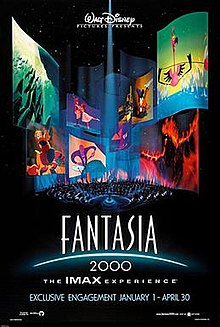 Story of movie Fantasia 2000 :
Story of movie Fantasia 2000 : 